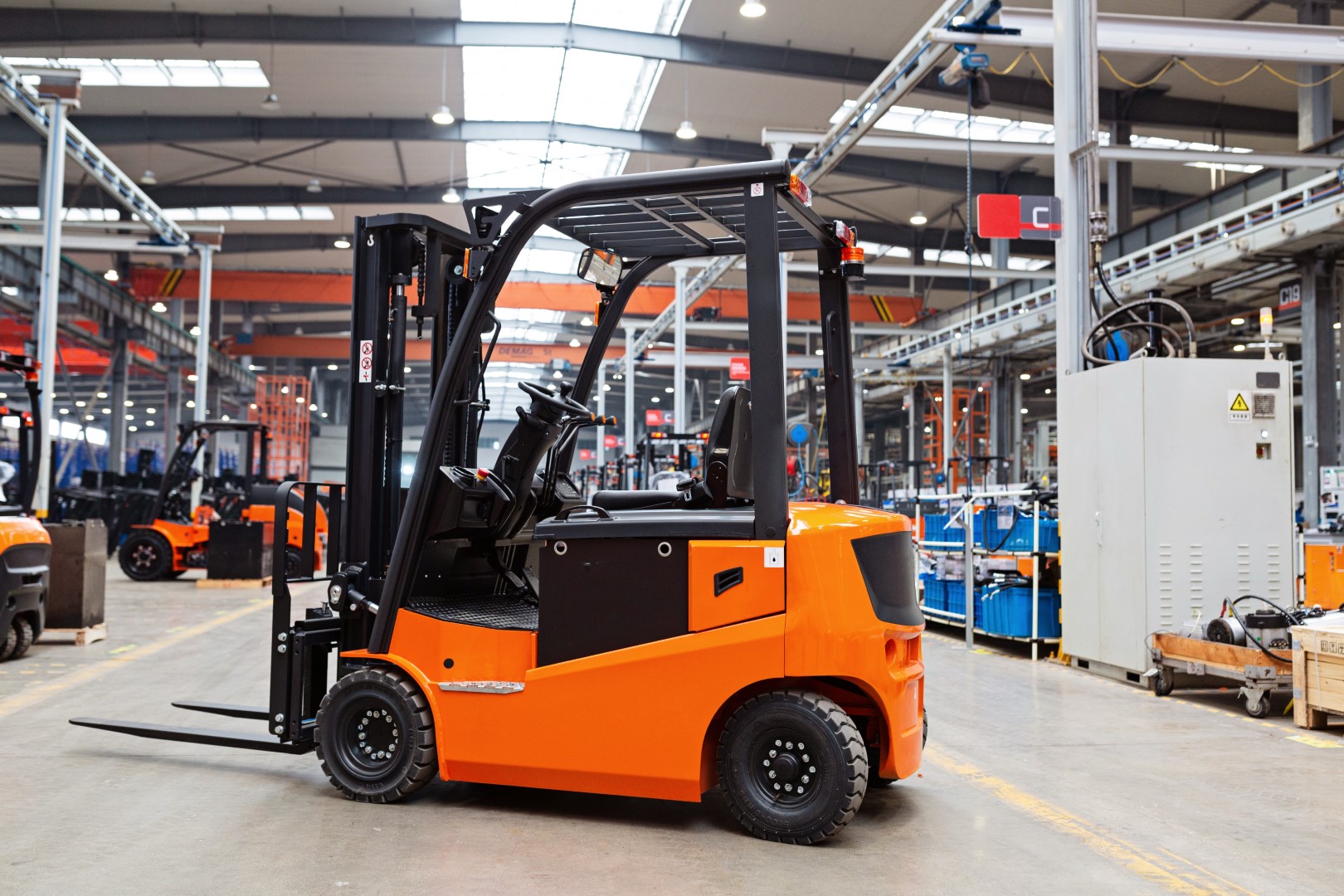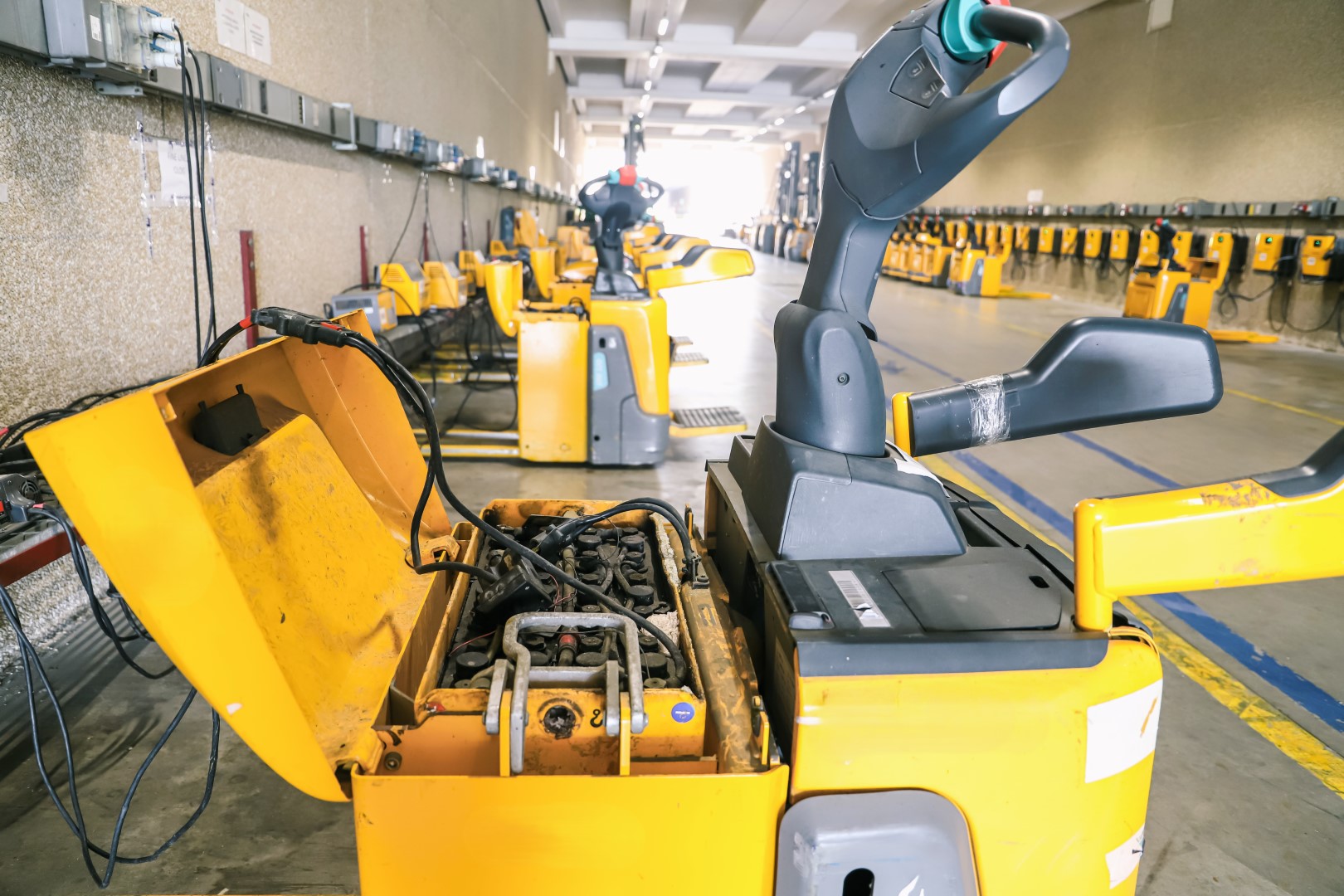Forklifts are essential equipment in warehouses, manufacturing plants, and distribution centers. They enable the efficient movement of heavy materials and contribute to streamlined operations. One of the critical components of a forklift is its battery, which powers the vehicle and ensures its smooth operation. Understanding the different types of forklift batteries is crucial for choosing the right one for your needs, ensuring efficiency, safety, and cost-effectiveness.
Types of Forklift Batteries
Forklift batteries can be broadly categorized into three main types: lead-acid batteries, lithium-ion batteries, and absorbed glass mat (AGM) batteries. Each type has unique features, advantages, and limitations, making them suitable for different applications and operating conditions.
Lead-Acid Batteries
Lead-acid batteries are the most commonly used type of forklift battery. They have been around for over a century and are known for their reliability and affordability. These batteries comprise lead plates submerged in sulfuric acid, which generates electricity through a chemical reaction.
Types of Lead-Acid Batteries
Flooded lead-acid batteries, also known as wet cell batteries, are the traditional lead-acid batteries. They require regular maintenance, including topping off the water and checking the acid levels. Sealed lead-acid batteries, on the other hand, are sealed and do not require regular maintenance. They are often used in environments where battery maintenance is challenging.
Advantages
Lead-acid batteries are generally less expensive than other forklift batteries, making them a cost-effective choice for many businesses. With over a century of use, lead-acid batteries have a proven reliability and performance track record. Additionally, lead-acid batteries are highly recyclable, making them an environmentally friendly option.
Disadvantages
Flooded lead-acid batteries require regular maintenance, including topping off water levels and ensuring proper acid levels. They typically require long charging times, resulting in downtime if not managed properly. Compared to newer battery technologies, lead-acid batteries have a shorter lifespan and may need to be replaced more frequently.
Lithium-Ion Batteries
Lithium-ion batteries are a newer technology that has gained popularity in recent years. They are known for their high energy density, efficiency, and low maintenance requirements. These batteries use lithium salts as electrolytes and can store more energy in a smaller space than lead-acid batteries.
Advantages
Lithium-ion batteries can store more energy in a smaller space, making them ideal for applications where space is limited. These batteries can be charged quickly, often within an hour, reducing downtime and increasing productivity. They require little to no maintenance, which can save time and reduce labor costs. Moreover, lithium-ion batteries have a longer lifespan compared to lead-acid batteries, which can result in cost savings over time.
Disadvantages
Lithium-ion batteries are generally more expensive upfront than lead-acid batteries. They can be sensitive to extreme temperatures, affecting their performance and lifespan. Additionally, lithium-ion batteries require special disposal procedures due to their chemical composition, which can be more complex than recycling lead-acid batteries.
Absorbed Glass Mat (AGM) Batteries
AGM batteries are lead-acid batteries that use a fiberglass mat to absorb sulfuric acid. Fiberglass makes them spill-proof and maintenance-free, and they are often used in applications where safety and low maintenance are priorities.
Advantages
AGM batteries do not require regular maintenance, such as topping off water levels, making them easier to manage. The absorbed glass mat design makes these batteries spill-proof, reducing the risk of acid leaks and improving safety. AGM batteries can deliver high discharge rates, making them suitable for applications that require high power output.
Disadvantages
AGM batteries are generally more expensive than traditional flooded lead-acid batteries. Compared to lithium-ion batteries, AGM batteries have a lower energy density, which means they may require more space for the same amount of energy storage. While they have a longer lifespan than flooded lead-acid batteries, AGM batteries do not last as long as lithium-ion batteries.
Factors to Consider When Choosing a Forklift Battery
Choosing the right forklift battery involves considering several factors, including your operational needs, budget, and maintenance capabilities.
Operational Requirements
Consider the weight and size of the loads your forklift will be handling. Ensure the battery can provide sufficient power for the required load capacity. Evaluate the number of hours your forklift will be in use each day. High usage may need a battery with a longer runtime or faster charging capabilities. Assess your facility's charging infrastructure. Ensure you have the equipment and space to charge and maintain the chosen battery type.
Budget
Compare the upfront costs of different battery types. While lithium-ion batteries have a higher initial cost, they may offer long-term savings due to their longer lifespan and lower maintenance requirements. Consider the total cost of ownership, including maintenance, replacement, and disposal costs. Calculate the long-term savings or expenses associated with each battery type.
Maintenance Capabilities
Determine your ability to perform regular maintenance tasks. If your facility lacks the resources for frequent maintenance, a low-maintenance option like lithium-ion or AGM batteries may be more suitable. Evaluate the safety features of each battery type. Spill-proof and maintenance-free options like AGM batteries can reduce the risk of accidents and improve workplace safety.
Environmental Impact
Consider the battery's environmental impact. Lead-acid batteries are highly recyclable, while lithium-ion batteries require specialized disposal procedures. Assess the battery's energy efficiency. More efficient batteries can reduce energy consumption and lower your carbon footprint.
Benefits of Upgrading to Modern Forklift Batteries
Upgrading to modern forklift batteries, such as lithium-ion or AGM batteries, can offer several benefits for your operations:
Increased Productivity
Modern batteries, especially lithium-ion, offer fast charging and longer runtimes, reducing downtime and increasing productivity. Quick charging allows for more efficient operation, enabling forklifts to be used for longer periods.
Enhanced Safety
Upgrading to spill-proof and maintenance-free batteries, like AGM or lithium-ion, can improve safety in your facility. These batteries reduce the risk of acid leaks and maintenance-related accidents, creating a safer working environment.
Lower-Maintenance Costs
Modern batteries require less maintenance compared to traditional flooded lead-acid batteries. Less maintenance can result in lower labor costs and reduced downtime for maintenance tasks, saving you money in the long run.
Long-Term Cost Savings
While the initial cost of modern batteries may be higher, their longer lifespan and lower maintenance requirements can lead to significant long-term cost savings. Investing in durable, efficient batteries can reduce the frequency of replacements and associated costs.
Environmental Benefits
Lithium-ion batteries are more energy-efficient and have a smaller environmental footprint than traditional lead-acid batteries. Upgrading modern batteries can reduce energy consumption and contribute to a more sustainable operation.
Maintenance Tips for Forklift Batteries
Proper maintenance is crucial for maximizing the lifespan and performance of your forklift batteries. Here are some maintenance tips for different types of batteries:
Lead-Acid Batteries
Regularly check the water levels for flooded lead-acid batteries and top off with distilled water as needed. Keep the battery clean and free of dirt and corrosion. Use a solution of baking soda and water to clean the terminals and casing. Perform equalization charges periodically to balance the cells and prevent sulfation. Avoid overcharging or undercharging the battery. Use a quality charger and follow the manufacturer's guidelines.
Lithium-Ion Batteries
Keep the battery within the recommended temperature range to prevent damage and ensure optimal performance. Built-in monitoring systems track the battery's health and performance. Address any issues promptly to avoid further damage. Ensure that the battery management system (BMS) software is up to date. This maintenance can help optimize performance and extend the battery's lifespan.
AGM Batteries
Clean the battery terminals and casing regularly to prevent corrosion and ensure good electrical connections. Try to avoid deep discharging the battery, as this can reduce its lifespan. Recharge the battery before it is completely drained. If storing the battery for an extended period, ensure it is fully charged and stored in a cool, dry place.

Advances in Forklift Battery Technology
As technology continues to evolve, advancements in forklift battery technology provide even more efficient, reliable, and environmentally friendly options. Solid-state batteries, for example, are an emerging technology that promises higher energy density, faster charging times, and enhanced safety. These batteries use a solid electrolyte instead of a liquid one, reducing the risk of leaks and fires. Additionally, advancements in battery management systems (BMS) are improving the performance and longevity of forklift batteries by optimizing charge and discharge cycles, monitoring health in real-time, and providing detailed diagnostics.
Choosing the Right Forklift Battery for Your Needs
Understanding the different types of forklift batteries is essential for selecting the right one for your needs. Each type of battery—lead-acid, lithium-ion, and AGM—has advantages and disadvantages, making them suitable for different applications and operating conditions. By considering operational requirements, budget, maintenance capabilities, and environmental impact, you can make an informed decision, ensuring your forklift operations' efficiency, safety, and cost-effectiveness.
Benefits of Upgrading to Modern Forklift Batteries
Upgrading to modern forklift batteries can offer numerous benefits, including increased productivity, enhanced safety, lower maintenance costs, and long-term cost savings. Proper maintenance is crucial for maximizing the lifespan and performance of your forklift batteries, ensuring that they continue to power your operations effectively. Investing in the right forklift battery can make a significant difference in the efficiency and safety of your operations.
Impact of the Right Forklift Battery on Efficiency and Safety
By understanding the different types of forklift batteries and their unique characteristics, you can choose the best option for your business and enjoy the many benefits that come with it. As technology advances, keeping abreast of new developments in battery technology will help you maintain a competitive edge and ensure your operations remain efficient and sustainable.
For more insights on forklift batteries and how to choose the best one for your business, visit our GC Electrical Service Inc. blog.


